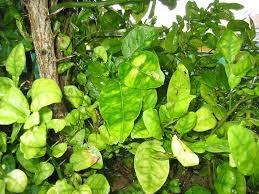The recent Huanglongbing Conference in Orlando, FL was chock full of people and ideas. Some of the ideas were still in the fermentation state and some were in practice on farm. One of the ideas that has been put into practice is the use of antibiotics, such as tetracycline and streptomycin to control the bacteria, Candidatus Liberibacter asiaticus (CLas), which causes HLB or citrus greening. This is somewhat disturbing since the rise of antibiotic resistant bacteria which affects humans has been affected by the wide-spread use in animal production facilities. This has led to some food companies to discontinue the sourcing of meat from animals treated with antibiotics for non-health reasons.
Antibiotics are molecules that limit the growth or reproduction of bacteria. They come under the umbrella of bactericides which include antibiotics, but also disinfectants like bleach and copper sulfate and antiseptics like peroxide, iodine and alcohol. Antibiotics when properly used will not harm human tissue and can be derived from bacteria, fungi and synthetically and will often act directly on the bacteria that is causing the disease. Some of these molecules can be simple assemblages of amino acids called peptides (etymology “to digest”) or strings of peptides called proteins. And sometimes they do not work on the bacteria itself, but on steps that lead up to processes that make the bacteria effective at its job.
At the conference, several papers were presented that illustrated this type of antibiotic effect. One of these papers was presented by Robert Shatters for his group. The peptide they are looking at actually inhibits the movement of the CLas bacteria in the gut of the insect, reducing or possibly preventing the transmission of the bacteria to the host plant – citrus.
The following is an abstract from the paper.
Identification of gut epithelium binding peptides that reduce systemic movement of ‘Candidatus' Liberibacter asiaticus within the Asian citrus psyllid vector
Robert G. Shatters, Jr1, Dov Borovsky1, El-Desouky Ammar1, David Hall1, Kasie Sturgeon2, EricaRose Warwick2, Marc Giulianotti3, Radleigh G Santos3 and Clemencia Pinilla4
1USDA, ARS, USHRL, Fort Pierce, FL USA; 2University of Florida, CREC, Lake Alfred, FL USA; 3Torrey Pines Institute for Molecular Studies, Port St Lucie, FL USA; Torrey Pines Institute for Molecular Studies, San Diego, CA USA.
Non-Technical summary: The Asian citrus psyllid is the only known vector of the bacteriumthat causes citrus greening disease. This insect acquires CLas from an infected citrus tree while feeding as a nymph. Transmission to uninfected trees occurs when infected adults emerge and fly off and feed on uninfected trees. Our current understanding of the CLas-psyllid interaction suggests that adults become competent for transmission only after the bacterium moves from the insect gut into the hemolymph and then to the salivary glands. We have identified a set of small peptides that when fed to the psyllid, bind the gut membranes and reduce the ability of the citrus greening bacterium to move from the gut to the salivary glands. These peptides are now being tested to determine if they can be used as an effective way of reducing the spread of citrus greening disease.
This and other paper abstracts will soon be available at: http://irchlb.org/files/33373ab0-7df3-4117-9.pdf
photo: HLB Symptoms
Attached Images:
